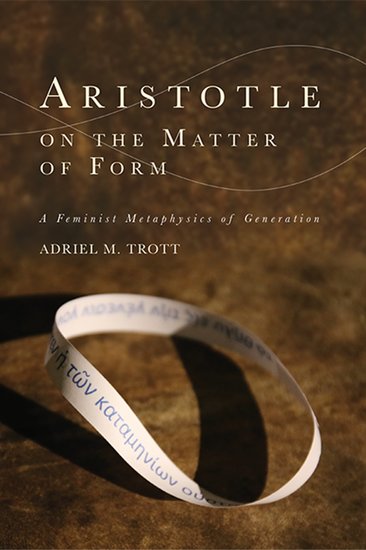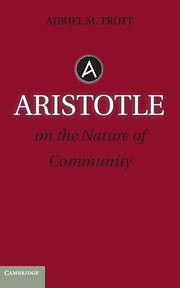Post-Ferguson Verdict Round-Up

The week since November 24, 2014 when the grand jury in Ferguson, MO guided by Prosecutor Robert McColloch decided not to indict has been a sad and devastating one for many people. For those of us who continue against all evidence to trust the institutions and processes of contemporary America to bring justice, this decision forces a reckoning with the racism that pervades our institutions and our very perceptions and judgments about other people. This post draws together some of the things I have read in the last week that made me think better and harder about what is happening.
Photo is of a protest last Tuesday at a Memphis high school. It’s all over the internet, but I believe it can be traced back to jcole here.
1. First, the documents in the case. It’s actually pretty surprising that the documents were released. My sense was that they were released in order to defend the grand jury’s decision and more, to defend the process. But people have begun to argue that the documents point to some pretty unorthodox grand jurying. For example, we can see from the documents that ADA Kathi Alizadeh gave instructions to the grand jury based on a Missouri statue that was found unconstitutional by the Supreme Court in 1985. Three months after distributing this document, Alizadeh realized her mistake and distributed new instructions, but never explained what the mistake was.
2. Related to the documents, Lauren Victoria Burke at theroot.com raises five particular discrepancies with Darren Wilson’s testimony, from Wilson’s acknowledgment that he did not like Brown’s neighborhood to Wilson referring to Brown as ‘it’ and ‘a demon’. Burke points to the ways that Wilson seemed predisposed to want a violent confrontation with Brown.
3. This piece from The New Inquiry might be the one that will or already has lost me friends. That’s ok. I think it’s important. “In Defense of Looting” is Willie Osterweil’s August 21, 2014 historical contextualization of the language of looting. Osterweil reminds us of the long connection between racism and capitalist oppression of labor. Osterweil discusses the efforts to distinguish good protesters from bad looters thus:
However, in trying to correct this media image—in making a strong division between Good Protesters and Bad Rioters, or between ethical non-violence practitioners and supposedly violent looters—the narrative of the criminalization of black youth is reproduced. This time it delineates certain kinds of black youth—those who loot versus those who protest. The effect of this discourse is hardening a permanent category of criminality on black subjects who produce a supposed crime within the context of a protest. It reproduces racist and white supremacist ideologies (including the tactic of divide-and-conquer), deeming some unworthy of our solidarity and protection, marking them, subtly, as legitimate targets of police violence. These days, the police, whose public-facing racism is much more manicured, if no less virulent, argue that “outside agitators” engage in rioting and looting. Meanwhile, police will consistently praise “non-violent” demonstrators, and claim that they want to keep those demonstrators safe.
This strategy reproduces the police effort to divide between those who deserve protection and those who do not, between lives that do not matter because they are guilty of some crime, no matter how small, and lives that do matter because their small crimes don’t show up. Osterweil goes on to remind us of the historical relationship between property and the racialization of its protection as it is directly connected to slavery.
The distinction between white and black was thus eventually forged as a way of distinguishing between who could be enslaved and who could not. The earliest working definition of blackness may well have been “those who could be property”. Someone who organized a mob to violently free slaves, then, would surely be considered a looter (had the word come into common usage by then, John Brown and Nat Turner would have been slandered with it). This is not to draw some absurd ethical equivalence between freeing a slave and grabbing a flat screen in a riot. The point, rather, is that for most of America’s history, one of the most righteous anti-white supremacist tactics available was looting. The specter of slaves freeing themselves could be seen as American history’s first image of black looters.
Osterweil reminds us of the investments that property owners have in claiming that threats to property are violent as they work to strip it of political significance at the same time, a frustrating turn when obvious police violence is explained as an effort to protect the very community protesting this violence.
The mystifying ideological claim that looting is violent and non-political is one that has been carefully produced by the ruling class because it is precisely the violent maintenance of property which is both the basis and end of their power. Looting is extremely dangerous to the rich (and most white people) because it reveals, with an immediacy that has to be moralized away, that the idea of private property is just that: an idea, a tenuous and contingent structure of consent, backed up by the lethal force of the state. When rioters take territory and loot, they are revealing precisely how, in a space without cops, property relations can be destroyed and things can be had for free.
What is exposed then is how force works to protect those who have and to render those who do not have as threats. There’s a lot more going on in that piece and I encourage you to take a look at it to reconsider the things that white America takes for granted — respecting property good, challenging law enforcement bad.
On Black Friday in the middle of my eleven hour drive home from Thanksgiving, I read Kiese Laymon’s piece on gawker.com, “My Vassar College Faculty ID Makes Everything Ok.” Laymon, an associate professor of English at Vassar, provides examples of the white racial supremacy that he experiences in the professoriate and the academy. It’s the sort of piece that knocks the wind out of you, as in this paragraph:
My Vassar College Faculty ID affords me free smoothies, free printing paper, paid leave, and access to one of the most beautiful libraries on Earth. It guarantees that I have really good health care and more disposable income than anyone in my Mississippi family. But way more than I want to admit, I’m wondering what price we pay for these kinds of ID’s, and what that price has to do with the extrajudicial disciplining and killing of young black human beings.
Also on Friday, The New York Times published Jacqueline Woodson’s response to Daniel Handler’s watermelon ‘joke’ at the National Book Awards. Handler was MCing the event and remarked after Woodson accepted her award that she was allergic to watermelon, “Just let that sink in your mind.” She writes:
In a few short words, the audience and I were asked to take a step back from everything I’ve ever written, a step back from the power and meaning of the National Book Award, lest we forget, lest I forget, where I came from. By making light of that deep and troubled history, he showed that he believed we were at a point where we could laugh about it all. His historical context, unlike my own, came from a place of ignorance.
She goes on to explain and contextualize the meaning of a black woman getting an award for writing about women of color’s experiences and being reminded even as she received the award that she was not an author, but a black author.
The week before the grand jury didn’t indict Michael Brown’s killer and that Woodson had to explain to the world why we shouldn’t be telling watermelon jokes, the media was brought to task for giving Bill Cosby a pass when it came to decades of sexual assault against women. Ta-Nehisi Coates cries foul on journalists who ignore these charges (including his former self) at The Atlantic Monthly. educated ice writes “Thoughts on Cosby, Mike Brown and Respectability” at xcphilosophy. educated ice argues that Bill Cosby gave white Americans an alibi for their racism and thus made it difficult for anyone to call him to task for fear of impugning the black man with whom we are willing to be associated with. ice writes:
I would like to hold open a space between what Coates calls organic black conservatism and the white desire for an alibi. To say that the latter determines the former is certainly much too reductive, and has the effect of reifying all black politics as a merely effect of white supremacy. Nevertheless, it seems to me that the politics of respectability unites both sides into a single logic. It is a logic of inclusion, a way of making a claim to citizenship on the terms of citizenship as already established. And to that extent, it works: inclusion can be gained, can be bought with success, can be achieved if you are twice as good, if you are never weak or never fail, if you are never marked by the phenomenon of error, that which is said to make us human. You can achieve inclusion, by being something more than human.
Finally, in analyzing Obama’s speech after the non-indictment, Ta-Nehisi Coates says the things that no elected official can say, the things about institutionalized racism, about American commitment to order more than non-violence, about how a history of racialized policing and enforcement policies led to Ferguson, about how “property damage and looting” have been tools for social progress. Coates reminds us how Obama was pushed to apologize for calling the arrest of Henry Louis Gates, Jr. stupid. He writes, “If the American public cannot stomach the idea that arresting a Harvard professor for breaking into his own home is ‘stupid,’ then there is virtually nothing worthwhile that Barack Obama can say about Michael Brown.” On Sunday, Michael Eric Dyson draws together Obama’s response, Cosby’s politics of respectability and the situation in Ferguson in his piece in The New York Times, “Where Do We Go After Ferguson?”
I’m sure these won’t be the last good things I read on race in America after Ferguson, but it’s an impressive start.




